Over the past months, one aspect we have been working on is to review the landscape of commercially available substrate and ink materials that could potentially fulfil our requirements for the development of low cost sensors in harsh aquatic environments. This work has been carried out at Swansea University and has involved the following activities:
- Review of recent publications on printable sensors for measuring physical parameters such as temperature, conductivity and pH within harsh aquatic environments
- Developing possible printable all-solid-state sensor configurations
- Acquiring suitable materials from suppliers
- Development of a preliminary plan for construction of printable temperature, conductivity and pH sensors
- Initial designs for screen printed temperature, conductivity and pH sensors, including some candidate materials
- Final sensor design which includes identificatin and sourcing of candidate materials for the sensors
- Optimisation of the semi-automatic manufacturing process for sensor design. This involves identifying optimum numbers of layers, ink loading pattern, snap-off gap, printing speed, squeegee pressure as drying conditions for the ink-screen pairs
- Preliminary printing trials to test compatibility of ink-substrate and ink-ink pairs.
- Preliminary printing trials of the first batch of prototype sensors
- Development of ion-selective membranes for pH sensing
- Preliminary testing and review of sensor prototypes
Substrates for sensor technologies for estuarine monitoring
An extensive search was undertaken in order to determine commercially available materials most suitable as substrates and inks to construct by printing the layered structure of sensors for estuarine monitoring.
We found no ideal substrate material available to fulfil all sensor requirements such as printability, cost, dimensional and thermal stability, solvent resistance, barrier properties for moisture and gases, flatness, light weight, flexibility, and east of handling categorised as polymeric, cellulosic, ceramic and glass.
Developing possible printable all-solid-state sensor configurations
Two appropriate temperature sensor architectures and four material combinations were identified. A two electrode and four electrode Wheatstone bridge design based on a resistance measurement principle were developed. Silver paste was chosen for the electrodes and carbon and PEDOT:PSS were chosen for the sensing elements where the latter require a suitable temperature coefficient of resistance.
Two pH sensor architectures were identified. A two electrode (conventional working and reference electrodes) and two interdigitated electrode designs based on an open circuit and impedance measurement principle respectively were developed.
A conductivity sensor architecture and two materials, silver and carbon were identified. A two interdigitated electrode design based on a resistance measurement was developed. Conductivity will be measured by measuring the resistance between two electrodes.
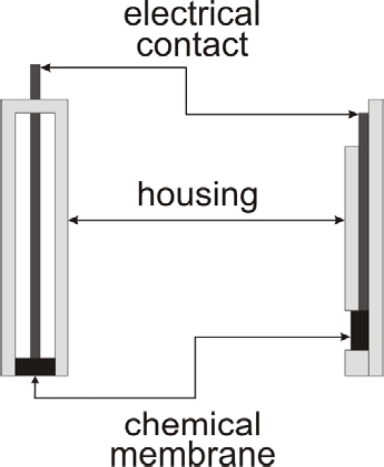
3D conventional sensor structure as a planar system of layers
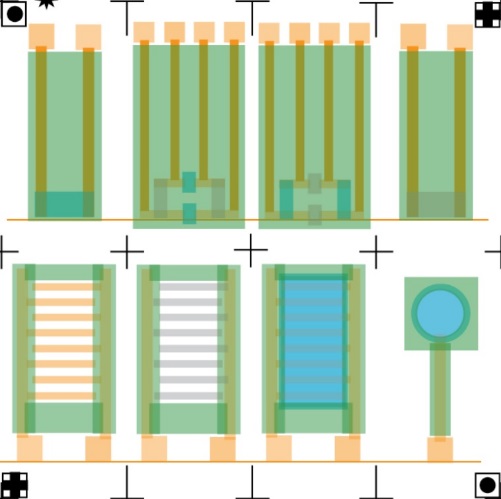
top row from left to right – PEDOT:PSS, carbon/PEDOT:PSS Wheatstone bridge, PEDOT:PSS/carbon Wheatstone bridge, and carbon temperature sensors; bottom row from left to right – silver and carbon conductivity sensors, interdigitated electrode pH sensor, and working electrode of pH sensor
Development of experimental design for manufacture of printable sensors for measuring physical parameters
The experimental method for manufacture of the printable sensors for measuring physical parameters by screen printing has been developed. This involved material and substrate conditioning prior printing; identifying optimum process parameters such as number of layers, ink loading pattern, snap off gap, printing speed, squeegee pressure, etc. as well as drying conditions. The equipment used in the print trials is displayed below:
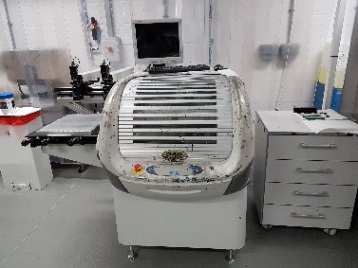
The DEK 248 screen printing press
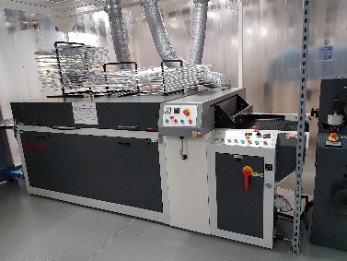
SC Technical Services Dryer
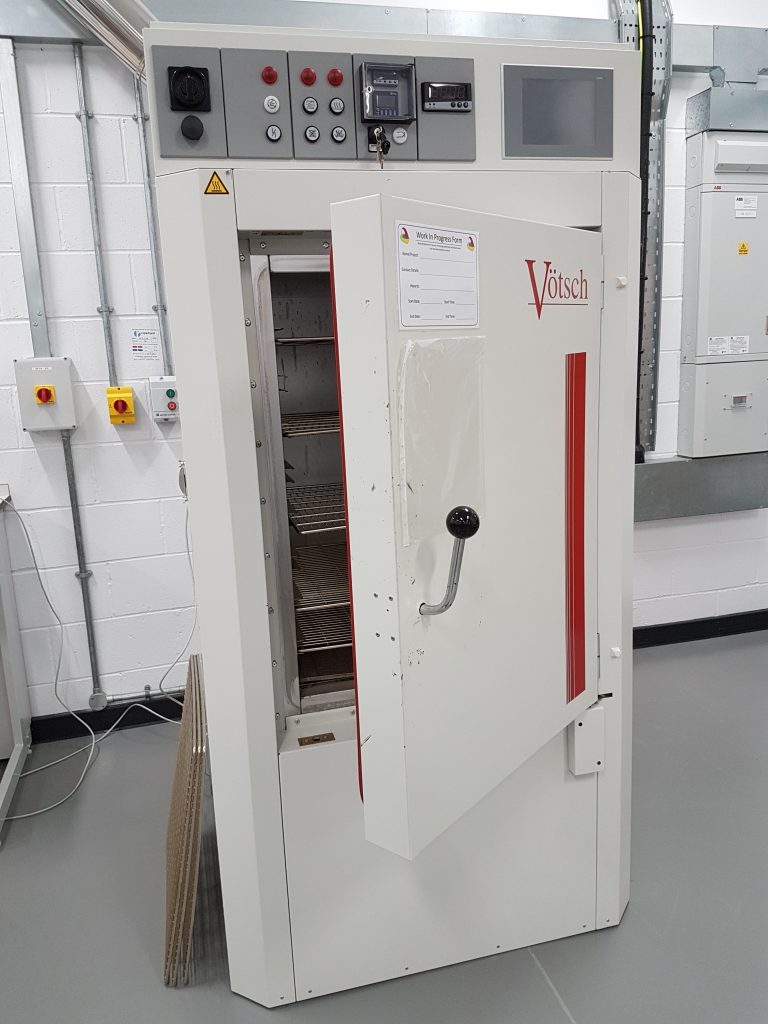
Votsch VTL 60/90 Oven
Prototypes of three sensors
Planar, all solid state, physical sensor prototypes were printed in eight different designs: four different temperature sensors, two different conductivity sensors, and two different pH sensors.
Each temperature sensor consisted of a conductive silver layer, carbon and/or PEDOT/PSS temperature sensitive layer, and a polymer dielectric as an insulator layer.
Each conductivity sensor consisted of a conductive silver and/or carbon layer and a polymer dielectric as an insulator layer.
Each pH sensor consisted of a conductive silver and carbon layers, PEDOT/PSS as an ion-to-electron transducer, and a polymer dielectric as an insulator layer. Formulations of the pH selective membrane are still being developed. The ion-selective membrane will be drop coated initially.
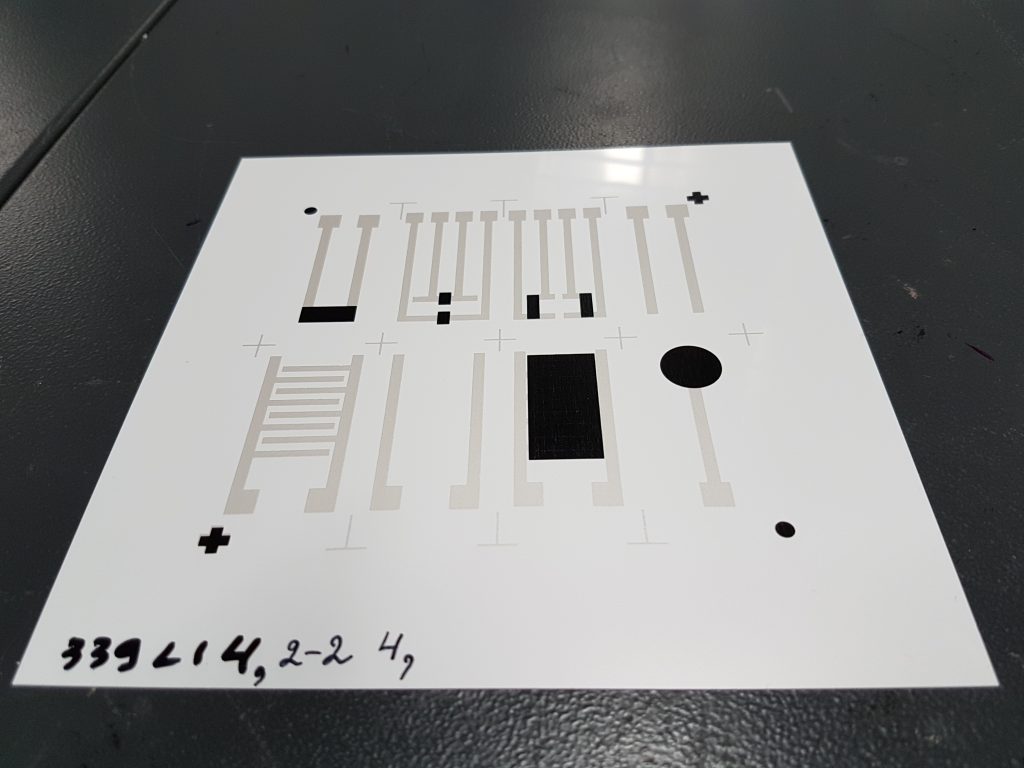
Silver and Carbon layers printed onto PET Melinex 339
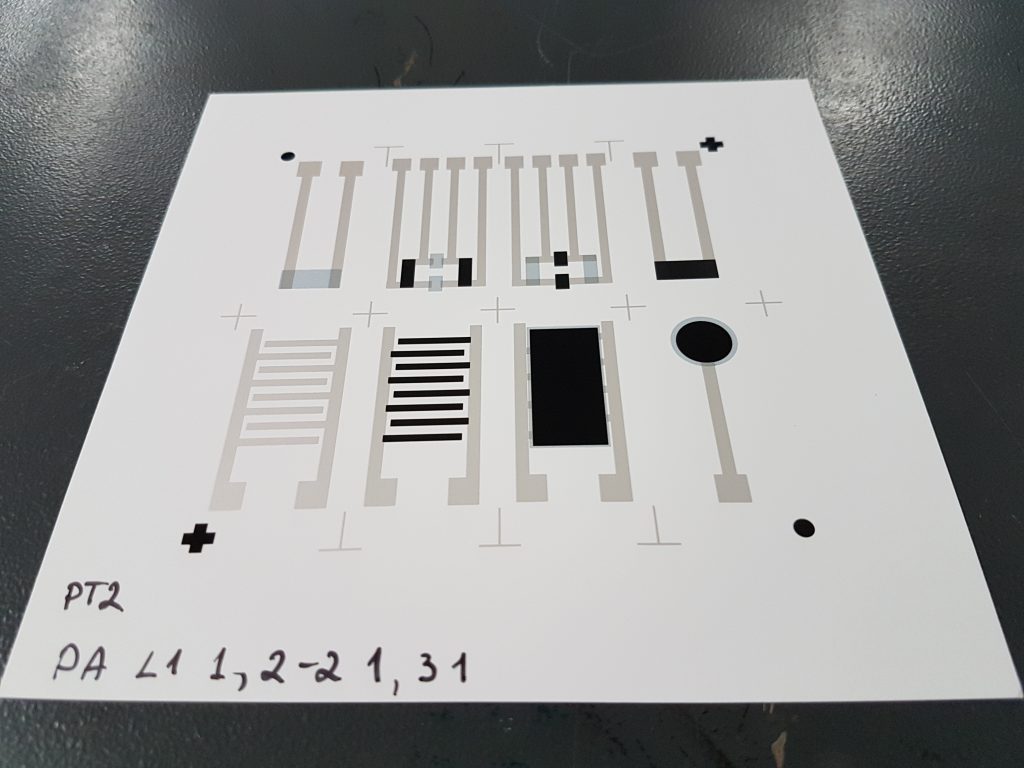
Silver, Carbon, and PEDOT:PSS layers printed onto synthetic paper
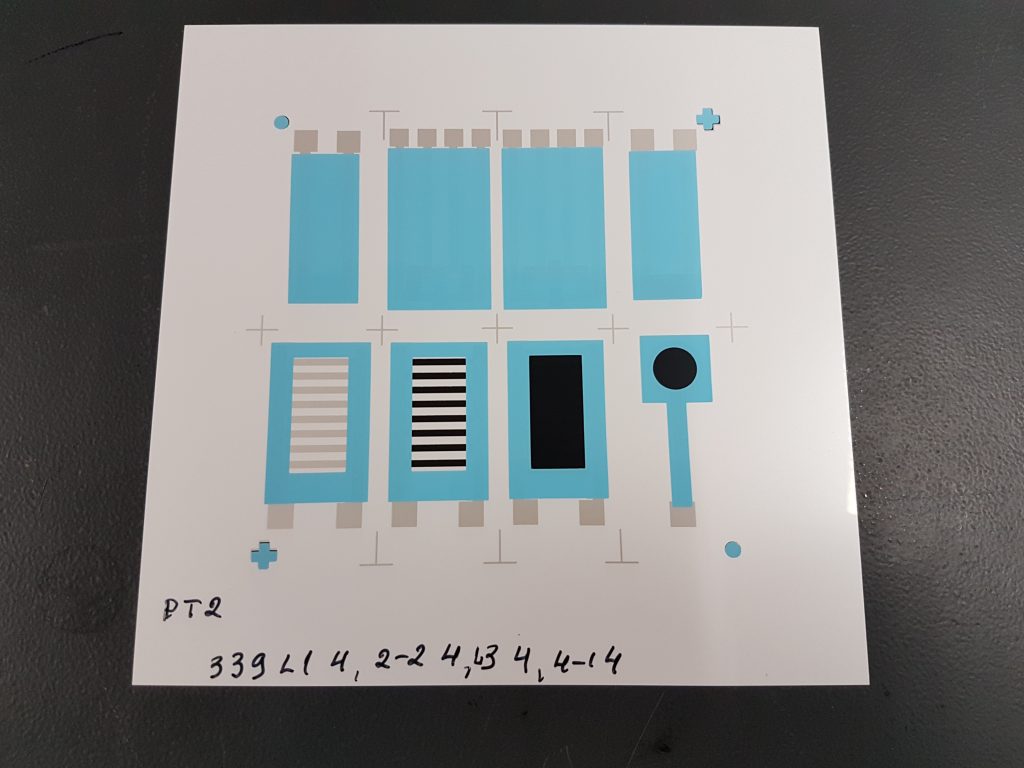
Silver, Carbon, PEDOT:PSS and insulator layers printed onto PET Melinex 339
Preliminary testing and review of temperature sensors
Temperature sensor response under 2-wire and 4-wire resistance sensing conditions was investigated. Preliminary data showed that the PEDOT:PSS temperature sensitive layer displayed rapid and stable response. The PEDOT:PSS temperature sensor displayed good stability and repeatability over a 72 hour period. However, the output of the temperature sensor was dependant on the sensing material of the sensor.
The carbon temperature sensor response was not stable over a 10 minute measurement interval. This needs further investigation. Further testing of temperature sensors is continuing.
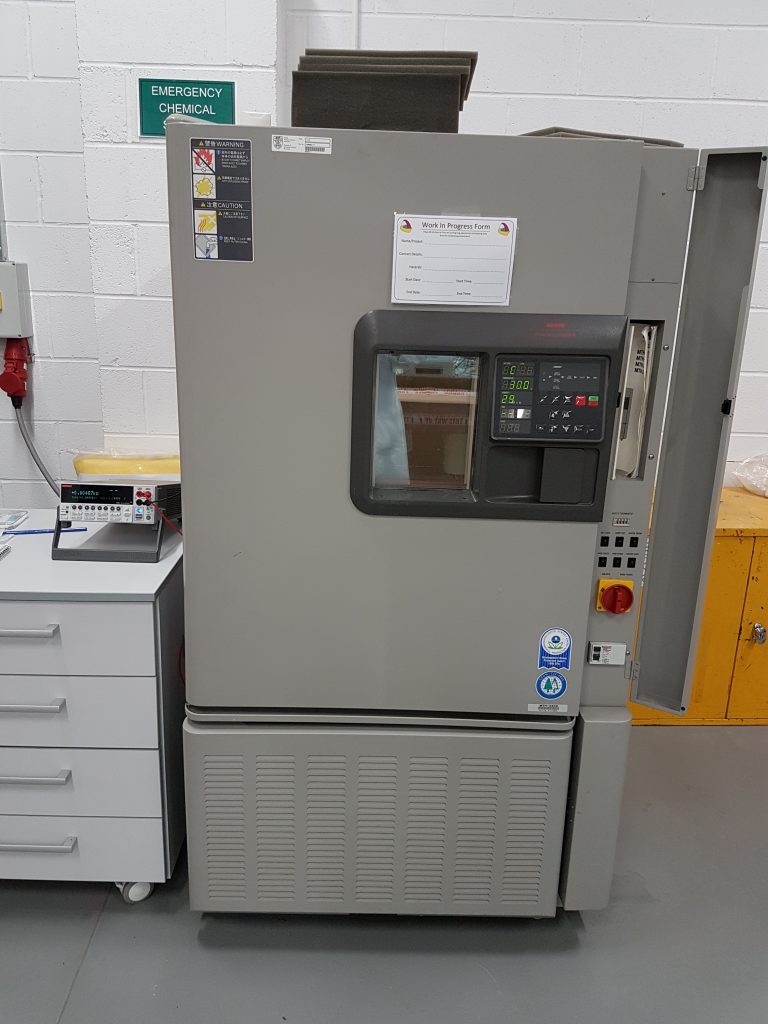
SANYO MTH-2400 Atmosphere chamber
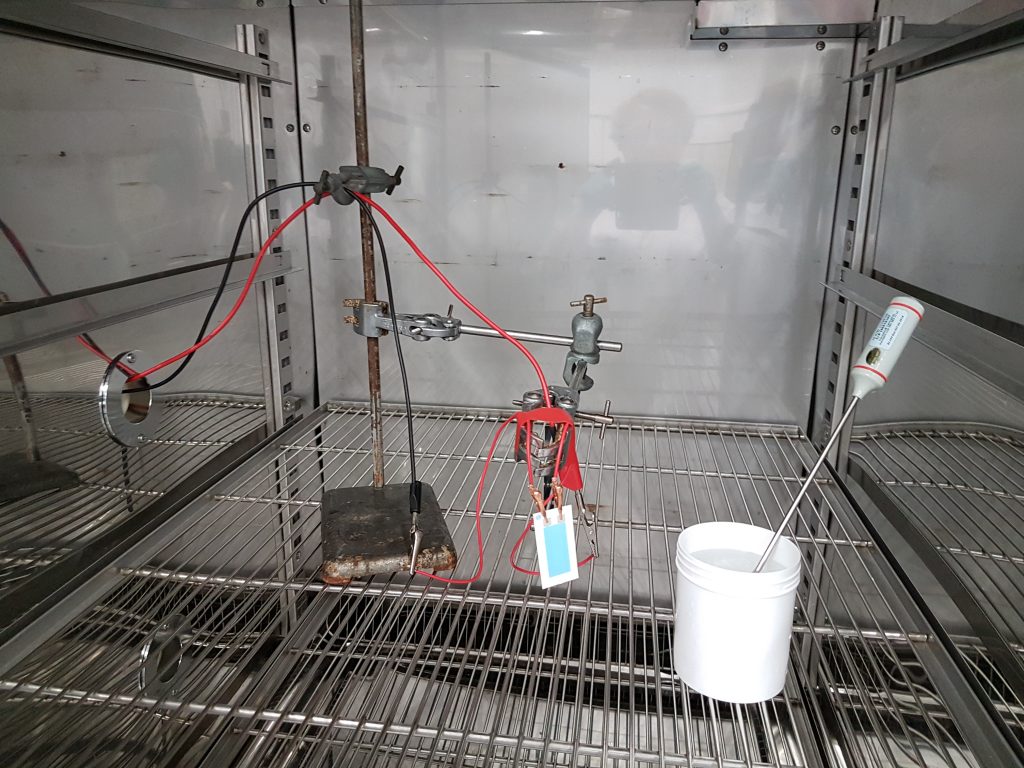
Electrode arrangement for temperature sensor testing in a pot of water

